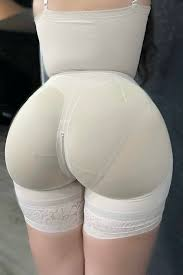
Are you considering a tummy tuck procedure but feeling overwhelmed by all the options available to you? Don’t worry, we’re here to help. We’ve compiled a comprehensive guide to assist you in narrowing down your choices and selecting the best tummy tuck procedure for your specific needs. Let’s explore the different types of procedures, their risks, benefits, and which one might be right for you.
1. Traditional Tummy Tuck (Abdominoplasty): This procedure involves making a large incision across the lower abdomen, removing excess skin and fat, and tightening the abdominal muscles. It is ideal for individuals who have a significant amount of loose skin and fat in the abdominal area. However, it does come with a longer recovery time and a higher risk of complications such as infection and blood clots.
2. Mini Tummy Tuck: This procedure is less invasive than a traditional tummy tuck and only addresses the lower part of the abdomen below the belly button. It is best suited for individuals who have minor to moderate excess skin and fat in the lower abdominal area. The recovery time is shorter, but the results may not be as dramatic as with a traditional tummy tuck.
3. Extended Tummy Tuck: An extended tummy tuck is a more extensive version of the traditional tummy tuck, which also targets the flanks or love handles. This procedure is recommended for individuals who have excess skin and fat not only in the abdominal area but also extending to the sides. The recovery time and risks are similar to those of a traditional tummy tuck.
4. Circumferential Tummy Tuck (Body Lift): This procedure is the most comprehensive tummy tuck option, as it targets not only the abdomen but also the lower back, hips, and buttocks. It is suitable for individuals who have lost a significant amount of weight and have excess skin and fat all around the midsection. The recovery time is longer, and the risks are higher due to the extensive nature of the procedure.
In summary, the right tummy tuck procedure for you will depend on your specific goals, the amount of excess skin and fat you have, and your overall health and risk tolerance. It is essential to consult with a board-certified plastic surgeon to discuss your options and determine the best course of action for achieving the results you desire.
For a visual representation of the different tummy tuck procedures and their characteristics, please refer to the following table:
With this guide, you can make an informed decision about which tummy tuck procedure is right for you. Remember to prioritize your safety and well-being above all else, and consult with a qualified plastic surgeon to discuss your options further.
Stage 3 Faja Tummy Tuck

What is a Stage 3 Faja Tummy Tuck?
The Stage 3 Faja Tummy Tuck is a procedure that involves removing excess skin and fat from around the abdomen and waist, tightening muscles, and securing the skin in place with a belt called a faja (which means “belt” in Spanish). This type of tummy tuck can be done alone or in combination with other procedures like liposuction or breast augmentation surgery.

Who Should Get It?

A stage 3 Faja Tummy Tuck is recommended for people who have lost at least 75 percent of their excess weight through dieting and exercise but still have excess skin on their abdomen or waistline as well as stubborn pockets of fat that won’t respond well to dieting or exercise alone. It may also
This is the third and final stage of my tummy tuck. In this blog post, I will be discussing the results of my surgery.
I hope that you have enjoyed following along with my journey as I’ve shared my experience with you in these posts. If you are considering having a tummy tuck, or any type of plastic surgery, please consider which procedure is right for you, whether it’s liposuction, a breast lift or reduction, breast augmentation or whatever your goals may be.
It’s important to know that there are many factors to consider when deciding on plastic surgery and it’s important to do your research before choosing a surgeon and facility. When considering having cosmetic surgery done make sure that you choose a board certified plastic surgeon who has extensive training and experience performing the procedure(s) that interest you.
It’s also important to find out about their credentials and background as well as their reputation among other patients who have undergone similar procedures by this specific surgeon at this specific facility. You can do this by asking friends who have had similar procedures done by other surgeons or by checking online reviews on sites like Yelp or HealthGrades where patients can leave feedback about their experiences at various medical facilities including plastic
The third stage of a tummy tuck involves suturing the abdominal muscles back together so that they are pulled tight and flat. The surgeon then closes the incision, which will be hidden by your belly button once it heals.
Once you have healed from this surgery, you can expect to see enhanced contours and a smoother abdomen. You may also notice an improvement in your posture as well as increased confidence in your appearance.
It’s time to get real about your body.
We’re talking about your tummy.
If you want to look and feel your best, we can help. We are experts at tummy tucks, with years of experience working with patients to help them reach their goals.
If you’ve been thinking about a tummy tuck for some time but haven’t gotten around to scheduling one yet, now is the time! We offer payment plans so that you can get started immediately without worrying about financial constraints.
If you’re currently pregnant and want to schedule a tummy tuck as soon as possible after delivery, we’ll work with you to make sure that happens.
We are here for YOU.
When it comes to your tummy tuck, you need to know that you can trust [insert name of company]. We are [insert number of years in business] and we have performed [insert number] tummy tucks. Our surgeons are all certified by the American Board of Plastic Surgery, and they have all completed years-long residencies in plastic surgery.
Our surgeons will be able to give you a free consultation at our office, where they will talk with you about how many pounds of skin and fat they will remove from your stomach during your operation. This is called “excess skin.” They can also discuss what kind of incisions will be made on each side of your abdominal muscles.
We use only FDA-approved materials in our procedures because we want to protect you from any infections or complications. Our staff is trained in infection control and sterility protocols, so they take great care to make sure everything stays clean while performing their jobs on patients like yourself!
Stage 3 Faja Tummy Tuck: How to get the most out of your faja.

You’ve been wearing your faja for five weeks now and you’re wondering, “What’s next?” Well, you’re in luck! We at [company name] know that you want to see results as soon as possible, so we’re sharing our top tips for getting the most out of your faja and getting back into your favorite jeans in no time.
First things first: don’t be fooled by the idea that once you start wearing a faja, you won’t be able to take it off for two months straight—you can take it off whenever it feels necessary. But we recommend doing so sparingly over those first five weeks. The more often you wear your faja, the faster it will work its magic on your body. The goal is to keep it on while sleeping and while at work, but during your downtime or when traveling, feel free to take it off whenever feels right (and let us know how it goes!).
I’m here to tell you that a faja tummy tuck is the best thing you can do for yourself.
I’ve been working in the medical field for almost 20 years, and I’ve seen so many people who are suffering from a condition called “skin laxity.” You may have heard of it as a “tummy tuck,” but that’s not exactly accurate. A tummy tuck is one type of skin laxity treatment, but it’s not the only one.
Skin laxity happens when your skin loses its elasticity, which is why it can’t hold your fat and muscle tissue in place anymore. When this happens, it causes sagging skin, which can make people look older than they really are. It also makes clothes fit poorly and often makes people feel self-conscious about their appearance.
When I started working in this field, I was shocked by how many people were dealing with this problem—and how many people were willing to pay thousands of dollars to try getting rid of it through surgery! Surgery isn’t always necessary though; there are lots of other treatments available that can reduce or eliminate your symptoms without having to go under the knife. That’s why today I’m going
In the last article, we discussed the importance of getting a faja tummy tuck to help you get back into shape after pregnancy.
In this article, we’re going to talk about how you can get the most out of your surgery by doing some pre-surgery preparation.
Your body is your temple. It’s the vessel through which you experience the world, interact with others, and feel comfortable in your own skin. When that vessel isn’t functioning properly, it can lead to a plethora of problems—including back pain, anxiety, and even depression.
That’s why it’s so important to take care of yourself by staying fit and healthy. But what if you’re already in great shape? How do you ensure that your body stays working at peak performance levels?
One solution to this problem is faja tummy tucks. Fajas are a type of compression garment that helps tone up the waistline while improving posture and boosting confidence. They’re ideal for anyone who wants to look slimmer without having to go on a diet or exercise regimen—and they’re also great for people who have had bariatric surgery because they help reduce swelling in the abdomen area.
In this blog post, we’ll delve into more detail about fajas and how they work. We’ll also give some tips on choosing the right size and style so that you get the most out of your faja tummy tuck!
The third stage of a tummy tuck is the closure of the surgical incisions. This is performed under general anesthesia and takes about 30 minutes to complete.
During this procedure, the surgeon will use dissolvable sutures to close the incision line. The remaining skin may be tightened as well, using additional sutures.
Once the incision line has been closed, a compression garment is placed on the patient and they are taken to recovery.
Hello and welcome to this blog on Stage 3 Faja Tummy Tuck.
In this blog, we will be discussing the following topics:
- What is a Stage 3 Faja Tummy Tuck?
- How does it work?
- Who is it for?
- What are the risks involved?
Hello,
The faja tummy tuck is a procedure that combines liposuction and abdominoplasty to remove excess fat, tighten the muscles and skin, and slim the abdomen. It’s a great option for women who are looking for more than just a flat stomach but also want to improve their overall shape.
It’s important to note that the faja tummy tuck is not right for everyone. If you’re interested in learning more about whether this procedure is right for your body type and goals, please schedule an appointment with one of our surgeons today!
Hey there!
I’m [your name], and I’m a professional blogger. Today, I’m going to be writing about Stage 3 Faja Tummy Tuck.
If you’ve been considering a tummy tuck, but aren’t sure if it’s right for you, this blog is for you. In this article, we’ll talk about what to expect during and after your surgery, what kind of recovery you should expect, and how much it costs. We’ll also review some of the best providers in the business so that you can find one near you!
Tummy tucks are incredibly popular because they help patients get rid of unwanted fat and skin around their abdominal area. This procedure has become increasingly popular over the past few years thanks to celebrities who have gone under the knife for cosmetic reasons—and even more so because of reality TV shows like Real Housewives Of Orange County where people are constantly showing off their impressive results from this procedure!
But before we get into too many details about tummy tucks, let’s take a step back and talk about what causes loose skin in the first place: obesity or rapid weight loss (like after pregnancy). If you’re overweight or obese and have had trouble losing weight
I’m here to show you how to use the Faja Tummy Tuck.
The Faja Tummy Tuck is a medical device that can help you get back in shape after having a baby. It works by supporting your abdominal wall and tightening the muscles, so that your tummy looks more toned and flat.
You may be wondering how this works. The Faja Tummy Tuck has 4 parts: 1) an inner belt, 2) an outer belt, 3) a front piece, and 4) a back piece. The inner belt is made of Velcro, so you can adjust it to fit your body perfectly. The outer belt is made of a soft material that won’t irritate your skin or rub against your clothing when worn underneath your clothes every day for six weeks while sleeping while wearing it all day long during the first three days of wearing it before moving on to wearing it at night only during the next three days before moving on again until finally wearing it only during sleep throughout each day until day 14 (when you can finally remove it). You’ll also need: 1) an ice pack; 2)
When should I wear my Stage 3 Faja
Sagging, flattened breasts with downward-pointing nipples can significantly affect your looks and self-confidence. If age, genetics, weight fluctuations, and pregnancy make you embarrassed about your breasts, an expertly performed breast lift in San Antonio, TX can help you restore their firm, toned, and perky appearance.
As a targeted surgery that trims excess skin and elevates breast tissue, a breast lift – medically known as mastopexy – stands out as a highly effective procedure to rejuvenate and enhance drooping breasts. This revitalizing surgery allows you to turn back the clock for a more youthful silhouette.
At the Texas Center for Facial Plastic and Laser Surgery, our board-certified surgeons specialize in performing breast lift surgeries to achieve natural-looking results. While our experience and skills allow us to effectively revise your breasts, our accredited surgical facility ensures your safety and comfort throughout the process.
Are you ready to achieve breasts that look as vibrant and uplifted as you feel? Contact Dr. Jose Barrera and our team to see how a breast lift can help in your case. To schedule your consultation, call (210) 468-5426 or fill out our online form today.
What does a Stage 3 Faja do
I always believed that the Post-Op Culture would be the same all around the world, and that all patients are being prepared equally, and given the same proper information regarding what to expect after surgery. After many years of being in the business, I came to the following conclusion. Not only is Brazil one of the leading innovators for plastic surgery procedures, but their Post-Op Culture is the best I have encountered so far. Brazilian Plastic Surgeons consider every surgery a piece of art, therefore, they understand that the Post-Op Convalescence period is just as important as the surgery itself.
The plastic surgery culture in Brazil is rooted in proper compression throughout all Three Post-Op Stages. Most Surgeons remain involved every step of the way, selecting the appropriate Post-Op Compression Garments and sizes for their patients to help comfort and heal them on their journey of convalescence to ensure the best possible outcome and results for their shapes and silhouettes.
There are three stages to wearing compression garments in our experience. Let’s say your clothing size before surgery was a Medium or 6-8. Let’s follow with an example:
Stage One: 0-2 Weeks Post-Op. You will be swollen, sensitive, in pain from your surgery, and most likely bloated from the pain killers. During this period, you will need mild compression, and be using a Compression Garment which is one size bigger than what you were wearing before surgery, which would be the model of your choice in a Large.
Stage 2: 2-6 Weeks Post-Op: During this time, your body has already changed, and you will be needing moderate compression. Your surgeon will do his magic with his surgery and technique, but the rest depends on you treating yourself very gently, letting yourself get pampered, and your use of proper compression to avoid fatty ripples and/or fat balls and bumps (unevenness). During this stage, you will be using the same compression garment model as for Stage One in size Medium for moderate compression.
Stage 3: 6-12 Weeks Po-Op: By this time, you should have healed a whole lot more. You should be 90% free of swelling and pain free, which will allow you to go for tighter and stronger compression to continue to shape and define your silhouette. This is the time where you may be ready for a different garment style in a Small for strong compression.
Further, it is recommended that you have constant compression 24 hours a day for the first six weeks, to help you obtain the most even shape and silhouette possible, which means that you need two garments per Stage One and Two: one to wear while you wash the other, as it takes 5 hours for a garment to air dry. For your Stage Three (weeks 6-12) wearing your Post-Op Compression Garment for 12 hours per day will suffice.
How long can I wear Faja after tummy tuck
360 lipo is an alternative to conventional liposuction which addresses the entire circumference of the abdomen, rather than just targeting a few disproportionate fat deposits. This is a more extreme and generalized form of lipo that emphasizes body shaping and sculpting over simply removing a given volume of fat cells. The recovery time for traditional and 360 liposuction are about the same, but 360 lipo patients typically require some extra aftercare because of the extent of the area it covers.
A faja is a special compression garment worn over the abdomen after procedures like liposuction, BBL and mommy makeovers to ensure the patient’s skin heals and contours correctly. Fajas are staged in size from pre-op to Stage 1 to Stage 2, in tightnesses ranging from fairly loose to highly compressive. A Stage 1 faja should be worn for at least three weeks postop, after which the patient will typically upgrade to a more compressive Stage 2 faja. During Stage 1, patients should refrain from wearing undergarments beneath their faja to prevent rippling or marking of the skin, but can usually resume undergarment use once they move up to the next stage.
Talking about the faja, Dr. Pane says, “Usually it’s recommended to wear it for about three months, because that’s when the scar tissue is most active. Beyond that, the faja has less of an effect.” This is because as the healing process progresses, most patients begin to reach a point of negative returns concerning the use of the faja versus the benefits it confers.
He continues, “In terms of working out, I usually tell people to take it a little easy for the first couple of weeks because if you work out a lot, with lipo you’re not going to hurt it and it’s not like you can stretch the muscles out or damage the muscles. But when you work out a lot, you’re going to get more swelling of the tissue, you’re getting your heart rate up and so on. When you get to about 2-3 weeks [about the time most patients transition to a tighter Stage 2 faja], you can probably do whatever you want and it’s probably not going to be a big deal. You may notice a little more swelling afterward than you otherwise would, but dealing with that with massage and so on should help.”
It’s important to note that, like with any other injury or insult to human tissue, postoperative patients are likely to notice some swelling, redness and bruising near the surgical area. This is very common and in most cases is an indication that the incisions and tissues are healing and resolving the way they need to. However, in cases where patients note unusual or unexpected redness, extreme swelling or discoloration of the affected areas, it is always a good idea to check in with your cosmetic surgeon just to make sure nothing’s wrong. If you notice a foul-smelling or cloudy discharge or your sutures break prematurely, you should definitely contact your surgeon as quickly as possible to prevent further complications. And of course, following your prescribed aftercare regimen concerning rest, medications and activity restrictions can help prevent a lot of these problems before they have the chance to get out of hand. It’s always better to err on the side of caution and check in if you think there might be a problem than wait until an issue that could be easily corrected turns into a major complication!
When should I wear my Stage 3 Faja?
I always believed that the Post-Op Culture would be the same all around the world, and that all patients are being prepared equally, and given the same proper information regarding what to expect after surgery. After many years of being in the business, I came to the following conclusion. Not only is Brazil one of the leading innovators for plastic surgery procedures, but their Post-Op Culture is the best I have encountered so far. Brazilian Plastic Surgeons consider every surgery a piece of art, therefore, they understand that the Post-Op Convalescence period is just as important as the surgery itself.
The plastic surgery culture in Brazil is rooted in proper compression throughout all Three Post-Op Stages. Most Surgeons remain involved every step of the way, selecting the appropriate Post-Op Compression Garments and sizes for their patients to help comfort and heal them on their journey of convalescence to ensure the best possible outcome and results for their shapes and silhouettes.
There are three stages to wearing compression garments in our experience. Let’s say your clothing size before surgery was a Medium or 6-8. Let’s follow with an example:
Stage One: 0-2 Weeks Post-Op. You will be swollen, sensitive, in pain from your surgery, and most likely bloated from the pain killers. During this period, you will need mild compression, and be using a Compression Garment which is one size bigger than what you were wearing before surgery, which would be the model of your choice in a Large.
Stage 2: 2-6 Weeks Post-Op: During this time, your body has already changed, and you will be needing moderate compression. Your surgeon will do his magic with his surgery and technique, but the rest depends on you treating yourself very gently, letting yourself get pampered, and your use of proper compression to avoid fatty ripples and/or fat balls and bumps (unevenness). During this stage, you will be using the same compression garment model as for Stage One in size Medium for moderate compression.
Stage 3: 6-12 Weeks Po-Op: By this time, you should have healed a whole lot more. You should be 90% free of swelling and pain free, which will allow you to go for tighter and stronger compression to continue to shape and define your silhouette. This is the time where you may be ready for a different garment style in a Small for strong compression.
Further, it is recommended that you have constant compression 24 hours a day for the first six weeks, to help you obtain the most even shape and silhouette possible, which means that you need two garments per Stage One and Two: one to wear while you wash the other, as it takes 5 hours for a garment to air dry. For your Stage Three (weeks 6-12) wearing your Post-Op Compression Garment for 12 hours per day will suffice.
